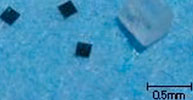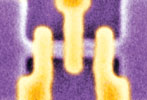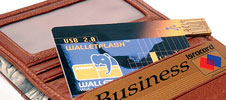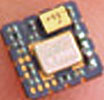
Southern Africa
Space science expertise in South Africa and France is set to receive a boost following a skills development agreement between the CSIR and Alcatel Alenia Space France. Co-operation is envisaged in the areas of landcover mapping; platform development and electronics (mechanical and optical); broadband solutions via satellite; satellite navigation and transport applications; spatial data infrastructure; and development in astronomy-related initiatives. The two organisations intend to consolidate global cooperation in the space domain to strengthen their respective competencies and knowledge. The aim is to contribute to socio-economic progress, both in South Africa and France.
Spescom Telecommunications has partnered with Gilat, a provider of products and services for satellite-based networking systems, bringing increased potential to the growing market for VSAT (very small aperture terminal), two-way, satellite-based communications in both local and regional markets. Spescom Telecommunications specialises in the access network and VSAT is another access technology which enhances its offerings in this area. See 'Spescom partners with satellite communications company Gilat"'.
Spescom Telecommunications has concluded a partnership agreement with Samsung Electronics, making it the local systems integrator for Samsung's CDMA technology. CDMA is a wireless communication technology that allows users to occupy the same time and frequency allocations in a given band/space and is the platform on which 3G technologies are founded. It provides a higher capacity for both voice and data communications, when compared to other commercial mobile technologies, and allows more subscribers per given time to be connected.
While the Sentech tower has been on the Johannesburg skyline for 44 years, not many people are aware of the number of signals that are transmitted from this fixture on a daily basis. The tower began its first transmissions on 22 September 1961. The first pilot for television broadcasting was conducted from the tower in 1975 and some 34 years later in 1999, the tower became the site of the first digital terrestrial television transmitter in Africa. Michelle Potgieter, Sentech marketing and communications general manager reports that Sentech is now trialling digital television from the tower as it prepares to upgrade the country's broadcasting infrastructure from an analog system to a digital one. The upgrade, which is expected to be completed by 2010, will bring South Africa in line with international standards and make it compliant with the conditions, which the country has to meet to satisfy FIFA ahead of the World Cup in 2010.
SMD Telecommunications has announced its appointment as a distributor for Danelec Marine, a manufacturer of a range of VDR and S-VDR solutions (simplified voyage data recorder) that which meet the IMO performance requirements. Danelec offers turnkey marine electronics projects from implementing embedded Linux software to developing marine industrial computer systems.
Overseas
Business
Search engine specialist Google reported revenues of $1,919 bn for its fourth quarter 2005, an increase of 86% compared to the fourth quarter of 2004, and an increase of 22% compared to the third quarter of 2005.
Analog Devices reported net income of $121m on revenue of $621m for the first quarter of fiscal 2006, up 12% from the $107m that the company reported for the first quarter of fiscal 2005 and up 76% from the $68m that the company reported for the fourth quarter of fiscal 2005. ADI said gross margins for the fiscal first quarter were $361m. Gross margins were reduced by $6,9m related to stock option expense and previously-announced manufacturing restructuring-related expense, according to ADI, which embarked on a major restructuring initiative last October.
On Semiconductor's revenues in Q4 of 2005 were $341,8m, an increase of approximately 9% from 2005's Q3. The company reported net income of $43,8m, compared to Q3's net income of $23,5m. In the like period a year ago, it posted a loss of $88,3m, on sales of $306,8m. EBITDA for the fourth quarter of 2005 was $76,8m and included a $0,8m restructuring, asset impairments and other benefit. EBITDA for the third quarter of 2005 was $654m and included $0,2m in restructuring, asset impairments and other charges.
Companies
Artesyn Technologies is to become part of Emerson Network Power. Emerson will acquire Artesyn for approximately $500m, bringing additional embedded power conversion technologies to Emerson Network Power's existing portfolio of solutions for customers in the enterprise computing, data, and telecommunications industries.
RF component supplier Sirenza Microdevices is acquiring Premier Devices for approximately $72,1m. Premier designs, makes and markets complementary RF components using technologies common to existing and planned Sirenza products.
Ultralife Batteries has agreed to acquire Able New Energy, a lithium battery supplier, for $4,2m in cash and stock.
In a major move to expand its operations, Germany's SolarWorld is assuming a 100% equity interest in the crystalline solar activities from Royal Dutch Shell for an undisclosed price. The production capacities that will be transferred to SolarWorld under this agreement amount to some 80 megawatts (MW). The Shell Solar Rural business - and its thin-film solar R&D unit - is not included in the transaction.
Signal integrity tool provider Sigrity has acquired single and multichip IC package design technology from Synopsys, including the technology within the Encore design and analysis tool.
Cypress Semiconductor has completed the 6,5% acquisition of the outstanding minority shareholder interest in its Cypress MicroSystems subsidiary.
Freescale Semiconductor and STMicroelectronics announced they will collaborate on a wide-ranging initiative to reinforce their respective strengths in automotive applications. The two companies intend to create a joint microcontroller design team, align process technologies and share intellectual property, including high-power MOS technologies.
RF-iT Solutions, a spin-off from Infineon Technologies, has raised 4 million euros from Pontis Venture Partners and Truffle Venture, to be used for expansion of RF-iT's 'Your Open Operating Environment', a platform for RFID system integration. RF-iT Solutions was founded in July 2005 and is set to take over all activities related to RFID system solutions from Infineon.
Volkswagen is working with Google and Nvidia to create an in-car navigation map system based on Google's satellite mapping software to give drivers a photo-quality bird's eye view of nearby terrain and city-scapes so drivers can better navigate. According to Volkswagen, 3D imagery is more accurate and efficient at conveying information about a location to a user. Volkswagen is working on other advancements, including automatic personalised information updates for the navigation systems. Google introduced Google Earth last June, as a free satellite imagery-based mapping product. Google Earth enables anyone to zoom in on aerial images of places on Earth.
STMicroelectronics and French telecoms operator France Télécom announced that they have signed an R&D partnership agreement to jointly analyse and define end-to-end services and platform requirements. The two will combine their effort to define architectural solutions for the next generation of mobile platforms. The project will address different mobile device components such as the application processor and operating system, SIM card ICs, and contactless interfaces.
Agilent Technologies has settled on the name 'Verigy' for its upcoming semiconductor test spin-off company. This name will be used when the company separates from Agilent, and it will carry the tagline, 'the brilliance of innovation.' According to the company, the Verigy name is built from the Latin prefix 'veri-' ('true, genuine'), which is the root of 'verification,' and so ties the name to the test business. The '-gy' suffix comes from the combining form '-logy,' meaning the name of sciences or bodies of knowledge, as in biology and geology.
Industry
IC revenues and unit sales worldwide grew 7,8% and 10,6%, respectively, in 2005, according to market analysis company, Advanced Forecasting. The 2005 increase in worldwide IC revenues to $192,8 bn was driven forward by consumption in the Asia-Pacific region, which grew 18,6% year-over-year reaching $89,4 bn and more than compensating for sales declines in Japan and Europe, Advanced Forecasting said. Worldwide IC unit sales increased to 116 billion, ending with a slight decline in December after 10 months of growth. ASICs came to represent 46% of the market by value and 37% of the market by unit sales. The application areas within ASICs included: consumer ICs up 21,1% by revenue, computer and peripherals up 36,5%, wireless communications up 16,9%, wired communication up 38,2% and automotive up 9,8%.
The three-month average of worldwide semiconductor sales in December 2005 was $19,95 bn, below expectations and down 2,2% from $20,41 bn in November, according to the Semiconductor Industry Association (SIA). As a result, the 2005 annual sales of semiconductors increased 6,8% to $227,5 bn. The three-month average sales in December 2005 were up by 8,6% compared to the $18,37 bn reported in December 2004. SIA forecasts that worldwide sales of semiconductors will grow by 7,9% in 2006 to $245 bn. Said SIA president George Scalise: "The outlook for the semiconductor industry remains robust. For the first quarter of 2006, we expect sequential change in the total market will be in the range of ±1%. The overall economic climate continues to be healthy, excess inventories are not an issue, and production capacity is in line with expected demand. We expect that the market for semiconductors will continue to grow at a compound annual rate of 10% - a remarkable rate for a $227 bn dollar industry."
As broadband moves from data-only services to triple play offerings, the DSL market is in flux, and total DSL IC revenues will drop from a high of close to $1,6 bn in 2004 to $880m by 2009, reports high-tech market researchers, In-Stat. Combining voice, video and data within the same stream forces a myriad of changes that will impact the DSL IC industry in the coming years, it says. By far, the most difficult problem is predicting what flavours of DSL will be required when and where. While there is clearly a drive toward faster connections, In-Stat says no one is sure where the thirst for more bandwidth will end. The total market for DSL in ports shipped will remain fairly stable across the forecast period, despite a slight dip in 2006, as the market prepares for the transition to ADSL2+ and VDSL2, it believes.
The market for general-purpose digital signal processor (DSP) chips dipped 2% last year to the $7,6 bn level because of a severe drop in the China cellular market in the first half of 2005. According to a new Forward Concepts study, that market will resume growth to a healthier 15% level in 2006, driven primarily by the 3G and 2,5 cellular markets. But the new study emphasises the even bigger market for DSP technology in the embedded DSP market that has grown to $14,3 bn, or nearly twice that of general-purpose DSP chips. The embedded market is served by over 100 chip vendors providing DSP technology in the forms of ASSPs, ASICs, FPGAs, RISC/DSP combos, DSP-enhanced MPUs, DSP-enhanced RISC cores and state machines.
STMicroelectronics has taken over first place in the fast-growing market sector of camera modules for mobile phones, according to electronics industry consulting firm, Prismark Partners.
Mobile-phone shipments in the fourth quarter reached a record 241,5 million units, driving the 2005 shipment total to 812,5 million units, according to iSuppli.
South Korea's LG Electronics expects its strength in flat screen TVs to propel it to TV sales of $10 bn by 2010.
Quanta Computer of Taipei, has announced it intends to build 'the $100 laptop computer' for children in developing nations. It hopes to turn out 5 to 15 million 100-dollar laptop computers each year, a business it believes is worth 20 million dollars for the next five years.
Plastic Logic of Cambridge, England, has teamed up with more than 20 international publishing houses in a three-year project to study business opportunities around mobile electronic-reading devices. The eNews initiative, organised under the leadership of Ifra, a German-based association of newspaper publishers, will examine opportunities for content providers and promote the development of standards for mobile electronic reading devices.
Microcontroller supplier Zilog has announced it is entering the 32-bit ARM-9 MCU market. Long active in the 8-bit microcontroller market, Zilog says its move into the 32-bit space is not an entry into the general purpose ARM-7 market. Rather, it is an extension of the company's application-specific product strategy, where it will continue to develop core families with more sophistication, processing power, and integration. Zilog says it intends to focus on application-specific markets to take advantage of growth opportunities in the areas of security and point-of-sale.
Arcom, a supplier of standard, modified and custom solutions for embedded communication and control technology, has a webpage that offers some excellent practical guidance on RoHS and WEEE Directive Compliance for manufacturers: see www.arcom.com/RoHS_and_WEEE/</a>
Technology
Israeli company, Lenslet, recently showcased EnLight, the world's first commercial optical digital signal processor, that is specified to run at a speed of 8 Tera (8000 Giga) operations per second - one thousand times faster than any known DSP, it claims. The processor will be used for intelligence, analysis of intelligence, weather forecasting, airport security, and for multimedia, cellular and video compression applications. EnLight256, the first in a line of ultrafast DSPs, can be used for voice analysis, face recognition, image processing and other applications, it says. Lenslet's optical processor offers a combined solution of optics and silicon in the format of a standard electronic board card with standard interfaces and development tools as generally accepted in the industry.
Samsung Electronics has developed a micro memory card, claimed to have the fastest writing and reading speed with a 1 GB density. The 12 x 14 x 1,1 mm sized card, designated 1GB MMCmicro, writes at 7,12 MB - 3,5 times as fast as other micro cards - and reads at 7,38 MBps, compared with 7,10 MBps for existing products, according to Samsung.
Texas Instruments and the Massachusetts Institute of Technology (MIT) have described at the recent ISSCC conference, a 65-nm SRAM device they claim is the industry's lowest voltage. The ultra-low-power, 256-kilobit SRAM uses ultra-dynamic voltage scaling techniques. The 0,4 V, sub-threshold SRAM achieves 2,25 times lower leakage power, as compared to its six-transistor counterpart at 0,6 V, according to TI and MIT. The SRAM also claims to incorporate 10 transistors per bitcell to enable operations down to 400 mV.
ARM Holdings and Handshake Solutions, a Royal Philips Electronics subsidiary, have developed an asynchronous processor based on the ARM9 core. The ARM996HS processor was designed to use Handshake Solutions' clockless IC design technology and is suitable for automotive, medical and deeply embedded control applications. It is said to be the first commercial clockless processor. Clockless processors consume zero dynamic power when there is no activity, significantly extending battery life. An additional benefit is low EMI.
Altera has announced that its new Stratix II device family is qualified to support the 667 Mbps DDR2 SDRAM interface data rate. A new auto-calibrating PHY memory interface controller IP core and the signal integrity of its Stratix II FPGAs enables this data rate to achieved, says the company.
According to engineering consultancy Chipworks, Intel's 65-nanometer process technology Presler and Yonah processors, make use of copper pillar bumping (CPB) soldering technology as an alternative to lead-tin solder balls.
Intel is working with Skype to add features to Skype's Internet telephony software. The collaboration has started with 10-way conference-calling and Skype plans to add video-calling optimised for Intel processors. Skype's free software makes it possible to hold telephone conversations over the Internet using a personal computer. With Skype version 2.0 or higher the conference call feature will only be possible if the computer's processor is the multitasking Intel Centrino Duo or an Intel Pentium D processor.
SiGe Semiconductor has started sampling an RF front-end module for the fast data-rate 802.11n draft specification.
Intel has developed a single-chip wireless LAN solution that meets the 802.11n MIMO (multiple input, multiple output) standard, which offers 108 Mbps of bandwidth. The chip, which integrates two radios and the associated power amplifiers in CMOS, is reportedly being described as 'the first CMOS MIMO radio.'
Hitachi claims it has developed the smallest and thinnest RFID chip to date, so small that it could be used as an intelligent watermark. The company presented details of its 0,15 x 0,15 mm by 7,5 µm thick chip at the recent International Solid-State Circuits Conference. At 7,5 microns, the chip substrate is thinner than paper, which typically measures 80 to 100 microns thick. It also has an RFID antenna integrated into the chip.

Scientists have demonstrated the first reproducible, controllable silicon transistors that can be turned on and off by the motion of individual electrons. The devices fabricated at NTT may have applications in low-power nanoelectronics, particularly as next-generation ICs for logic operations (as opposed to simpler memory tasks.) The transistors were tested at NIST. At negative voltage, the transistor is off; at higher voltage, the transistor is turned on and individual electrons file through the circuit, as opposed to thousands at a time in a conventional device. Dubbed 'single-electron tunnelling' (SET) devices, they are typically made with a metal wire interrupted by insulating barriers that offer the means to control electron flow. The picture shows three tunable gates across an electrical channel.

Israeli startup, Walletex, has developed the world's first credit card-sized wallet flash drive, called Wallet Flash. The 1,9 mm thick flash drive has a double-sided connector so it can fit either way up into USB ports. It is also waterproof and heat-tolerant, according to the company. Storage capacities range from 128 MB to 1 GB.

Rakon has developed what it claims is the world's smallest GPS radio frequency receiver module. The New Zealand company says the tiny radio receiver, as tiny as a baby's fingernail, is a complete 'plug-and-play' unit, which makes it uniquely simple for GPS designers to embed into their devices.


© Technews Publishing (Pty) Ltd | All Rights Reserved